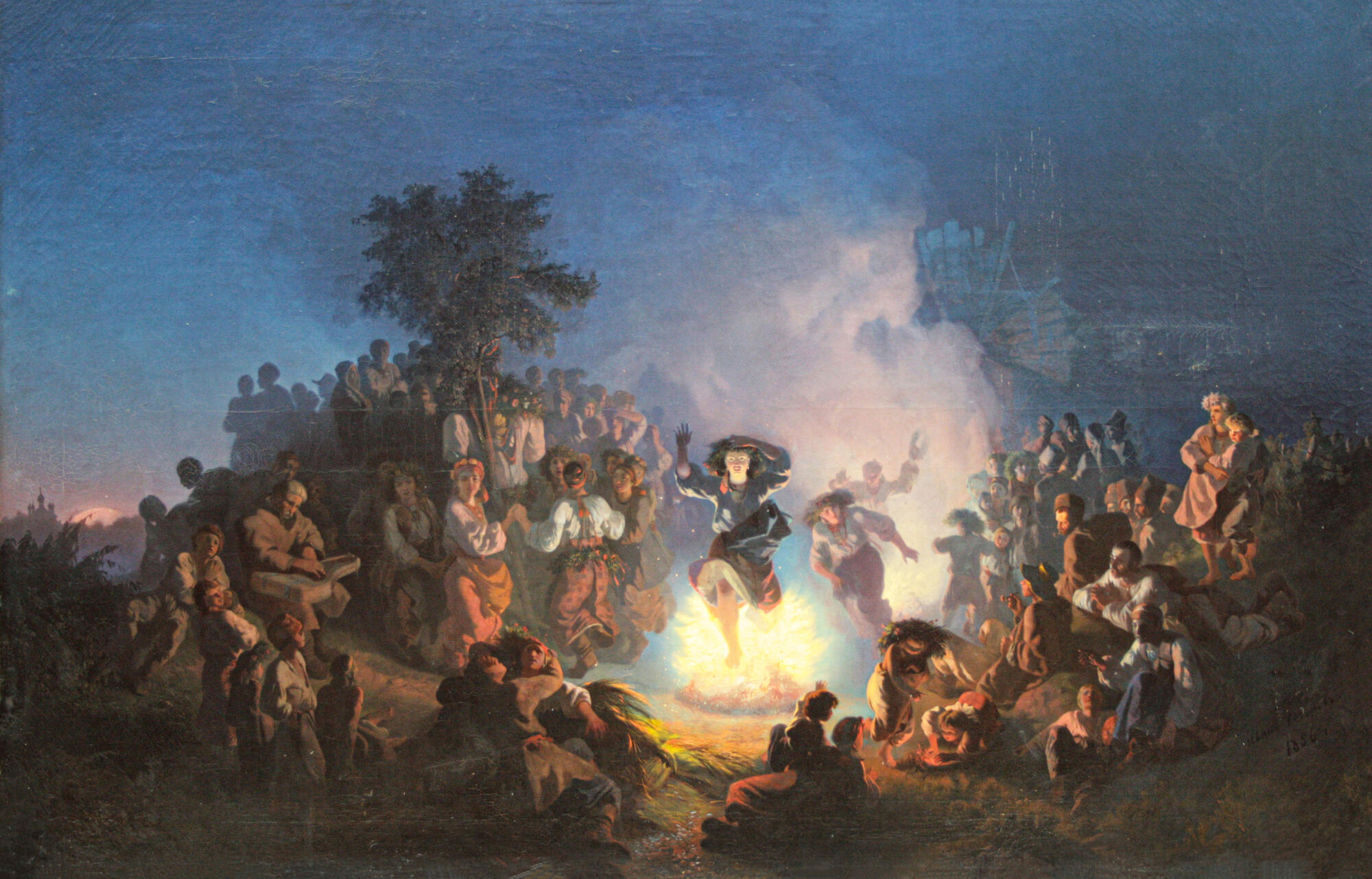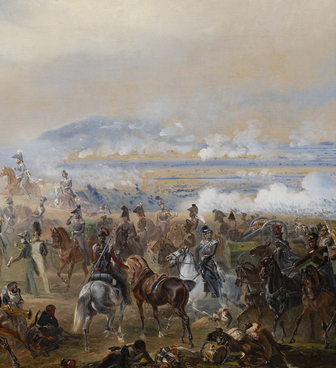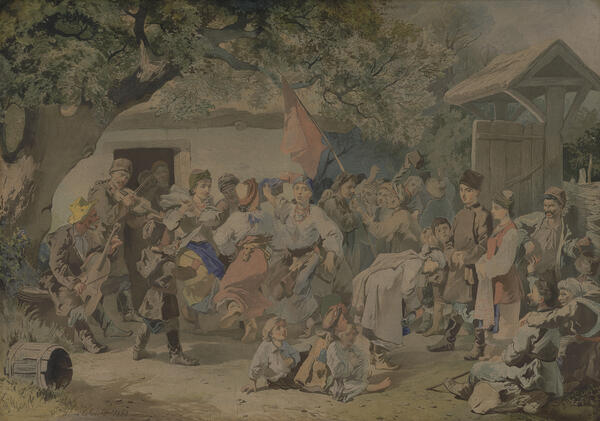The art collection of the Nizhny Tagil Museum of Fine Arts features the 1856 painting “Kupala Night” by the Russian artist Ivan Sokolov. In the second half of the 1850s, he created an entire series of ethnographic paintings exploring the life of peasants, which his contemporaries dubbed “an encyclopedia of folk life”.
Ivan Ivanovich Sokolov was raised at the Institute for Nobles in Moscow. In 1846, he started attending classes at the Imperial Academy of Arts as a non-matriculated student. There he studied in the class of historical painting. When he was still a student, Ivan Sokolov became fond of genre painting, as evidenced by his first awards: he received a Small and a Grand Silver Medal for “painting folk scenes”. Later, it was for genre painting that Sokolov was awarded the title of an academician, and then a professor. The artist traveled extensively throughout Europe and visited the Caucasus, but his art was mostly inspired by the life of peasants in the Black Earth region which he was well acquainted with as he spent a lot of time at his parents’ estate in the Kursk Governorate. Contemporaries did not consider Sokolov a uniquely talented artist but praised his skills in using color.
“Kupala Night” depicts a summer folk pagan holiday that coincides with the Christian feast of the Nativity of St. John the Baptist. It is in the Central Black Earth region, populated by many Ukrainians, that many archaic customs and traditions were preserved, which were associated with the celebration of the summer solstice. Kupala Night was filled with rituals related to fire, water, and herbs. Most of them take place at night. The pagan rituals involved finding one’s soulmate and predicting happiness in marriage. The Christian tradition contributed a new understanding of the holiday — bathing in the water and jumping over the bonfire was associated with cleansing. It was also believed that herbs collected on that day had unique healing and magical powers. They were collected by the “old and young”, and the fern was considered the most powerful herb on Kupala Night. Legend has it that fern blooms only once a year, and the bearer of the flower gets miraculous powers, including the ability to see treasures under the ground. Ivan Sokolov succeeded in conveying the essence of the holiday with its merry festivities, songs, dances, and mesmerizing mysterious rituals.



